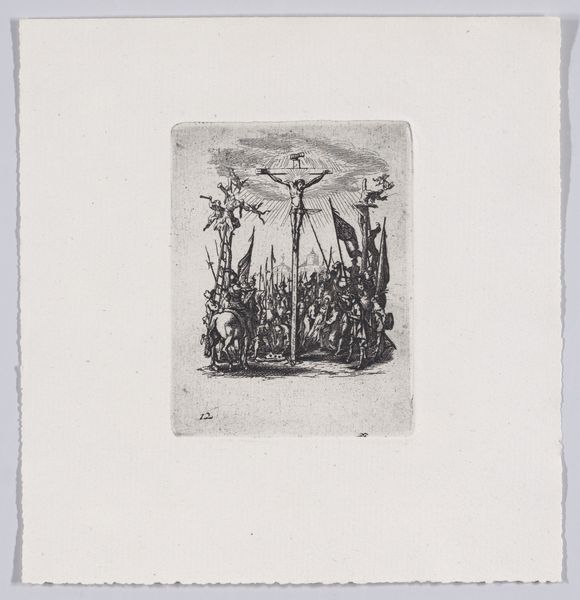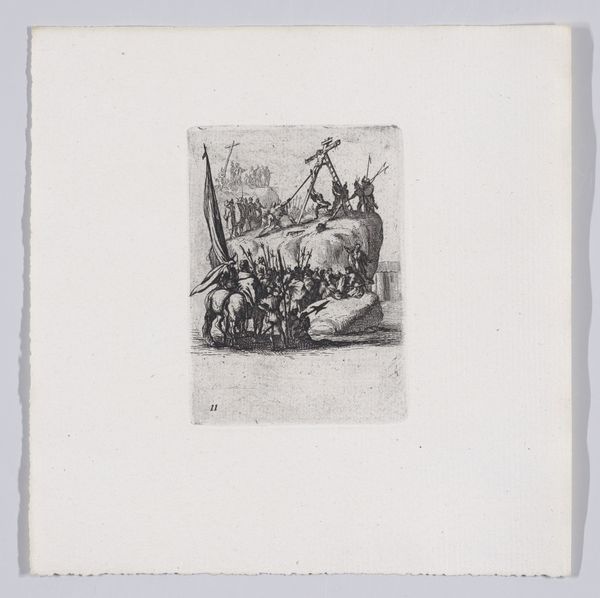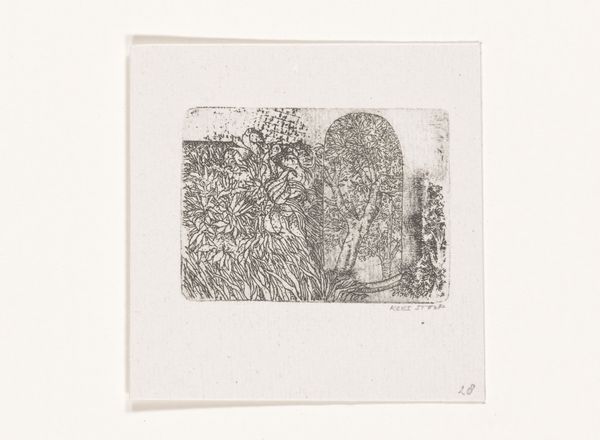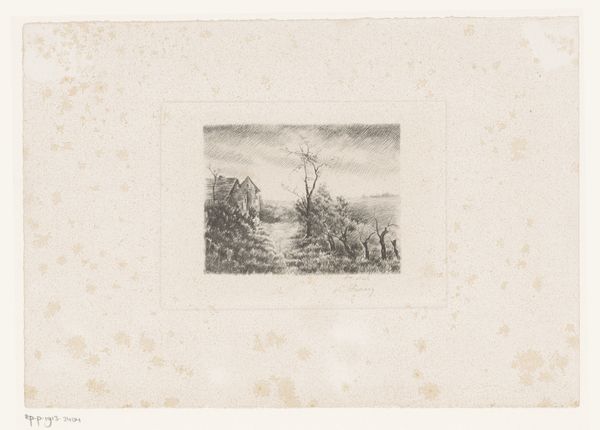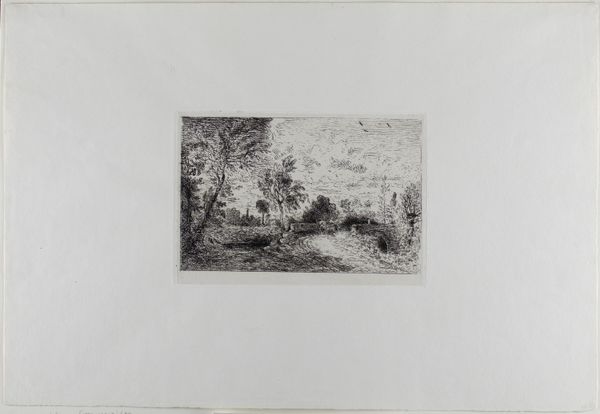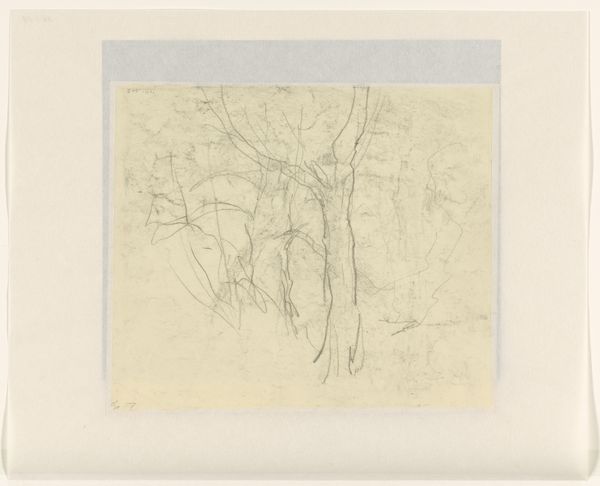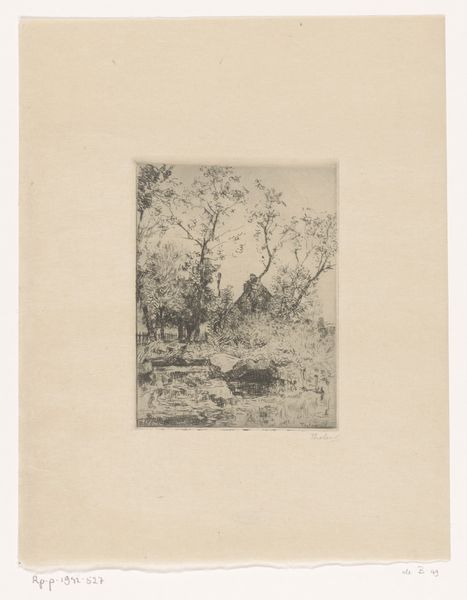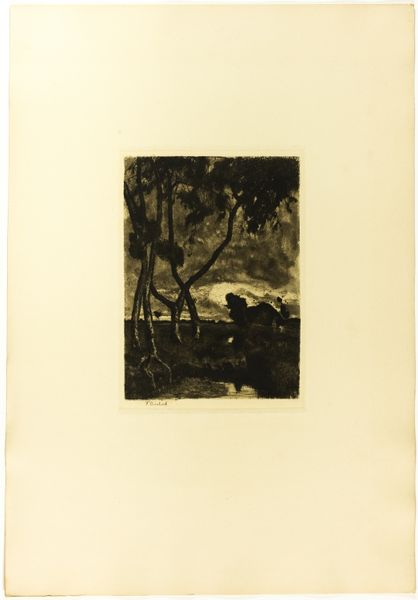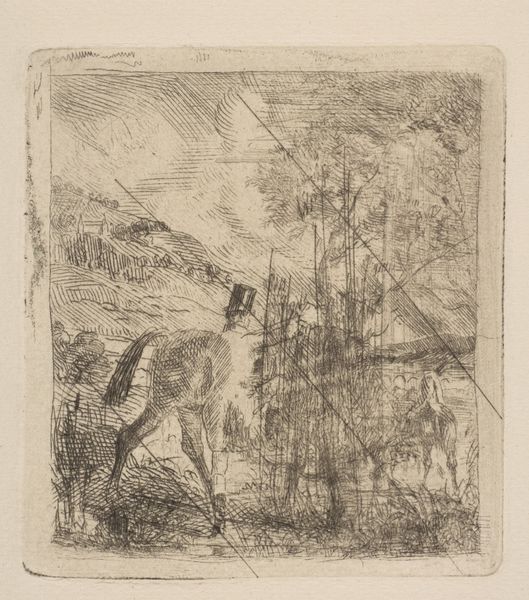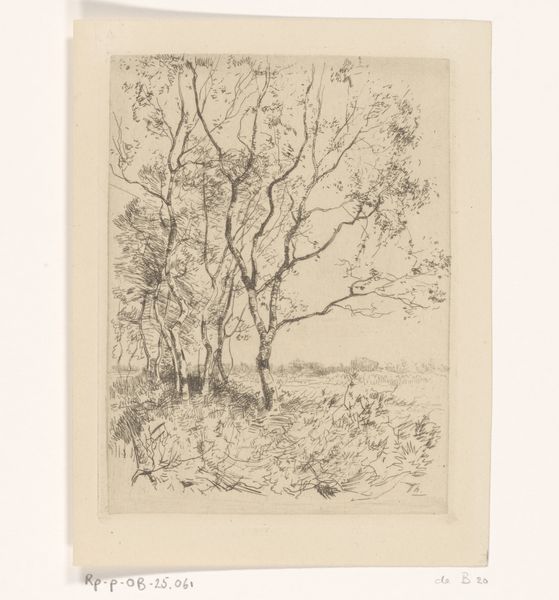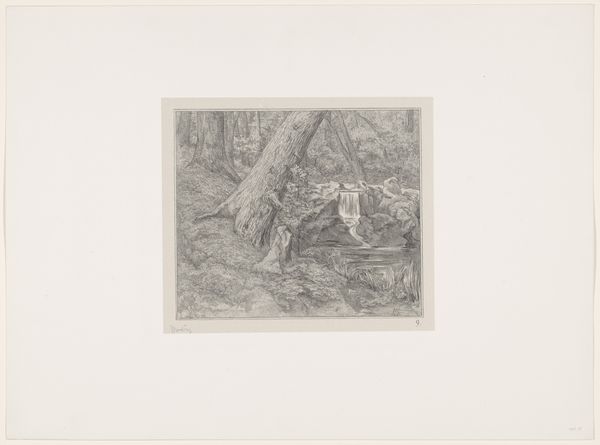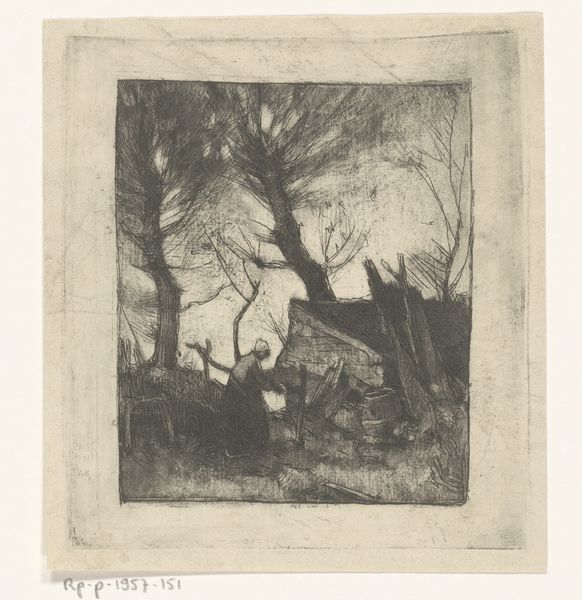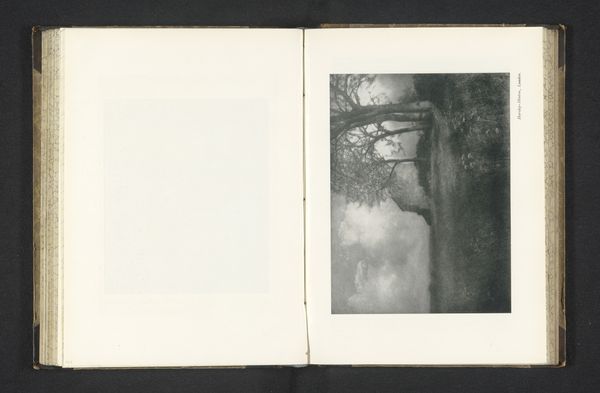
Reverse Copy of Jesus est Livré aux Juifs (Jesus is Delivered to the Jews), from La Petite Passion (The Little Passion) 1624 - 1700
0:00
0:00
drawing, print, etching, engraving
#
drawing
#
baroque
# print
#
etching
#
engraving
Dimensions: Sheet: 5 1/2 x 5 3/16 in. (14 x 13.2 cm) Plate: 3 x 2 3/16 in. (7.6 x 5.5 cm)
Copyright: Public Domain
Curator: Here we have a print titled "Reverse Copy of Jesus est Livré aux Juifs (Jesus is Delivered to the Jews), from La Petite Passion (The Little Passion)." It's attributed to an anonymous artist and dates roughly from 1624 to 1700. Editor: What immediately strikes me is the somber, almost chaotic energy conveyed through the density of the lines and figures crammed into this small etching. Curator: Indeed, this artwork must be understood in light of the pervasive antisemitism in Europe at the time. It portrays the handing over of Jesus, playing into narratives that have fueled centuries of persecution and discrimination. Editor: Focusing on the formal elements, observe the dramatic use of chiaroscuro—the stark contrast between light and shadow. This heightens the emotional intensity, emphasizing the turmoil of the moment. The composition seems to deliberately avoid a clear focal point, adding to the sense of unrest. Curator: Consider, too, how the work reproduces and thus perpetuates the historical narrative. The figures identified as "Jews" are presented in a way that invites viewers to assign blame, a dynamic that has significant social and political repercussions even today. Editor: I notice the artist's skilled use of line to create a sense of depth, particularly in the background. The architectural elements—the suggestion of buildings in the distance—establish a setting, while also contributing to the claustrophobic feel. The print is also filled with many graphic lines and symbolic objects that deepen and multiply interpretations. Curator: Analyzing it through a lens that acknowledges power dynamics reveals how seemingly simple depictions contribute to deeply embedded stereotypes. The representation here normalizes, even sanctifies, historical injustice. Editor: After closer inspection, it strikes me how all this tension is brilliantly composed in the artwork; the anonymous artist uses his printmaking techniques to achieve the goal of portraying religious subjects during that time. Curator: Precisely. By grappling with its unsettling themes, we can promote an active and conscious conversation surrounding faith, social power, and visual imagery. Editor: Analyzing artwork from multiple viewpoints surely exposes many interesting qualities, and it may allow us to continue a new cycle of observation for future reference.
Comments
No comments
Be the first to comment and join the conversation on the ultimate creative platform.
